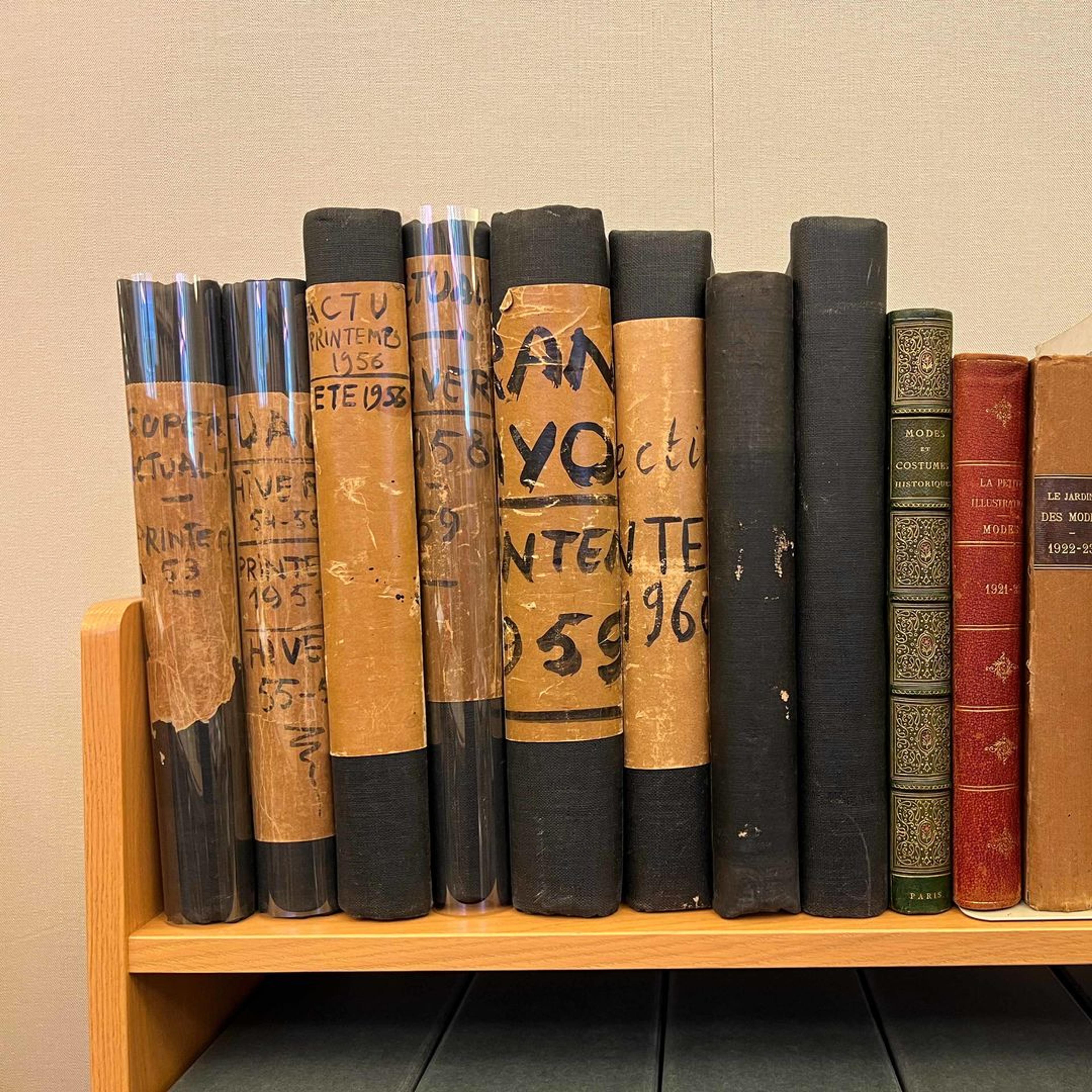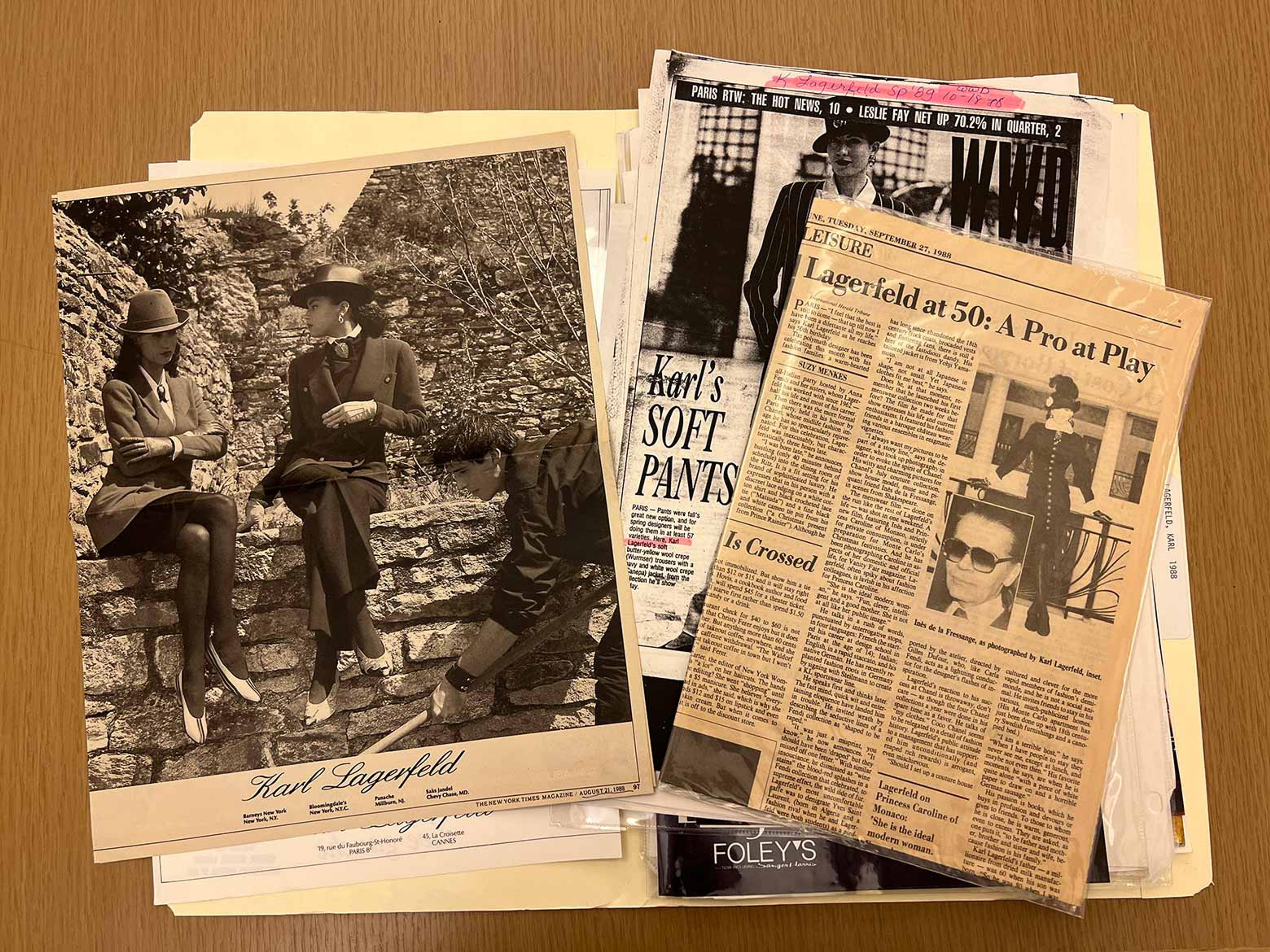Currently on view through July 16, 2023 is The Costume Institute’s spring show, Karl Lagerfeld: A Line of Beauty. This exhibition explores the 65-year career of German-born designer Karl Lagerfeld (1933–2019), a legendary fashion icon whose presence permeated the worlds of fashion and popular culture. Researching a well-established and multi-faceted figure such as Lagerfeld in our library holdings will reveal many primary resources and reference materials unique to a fashion-focused library collection.
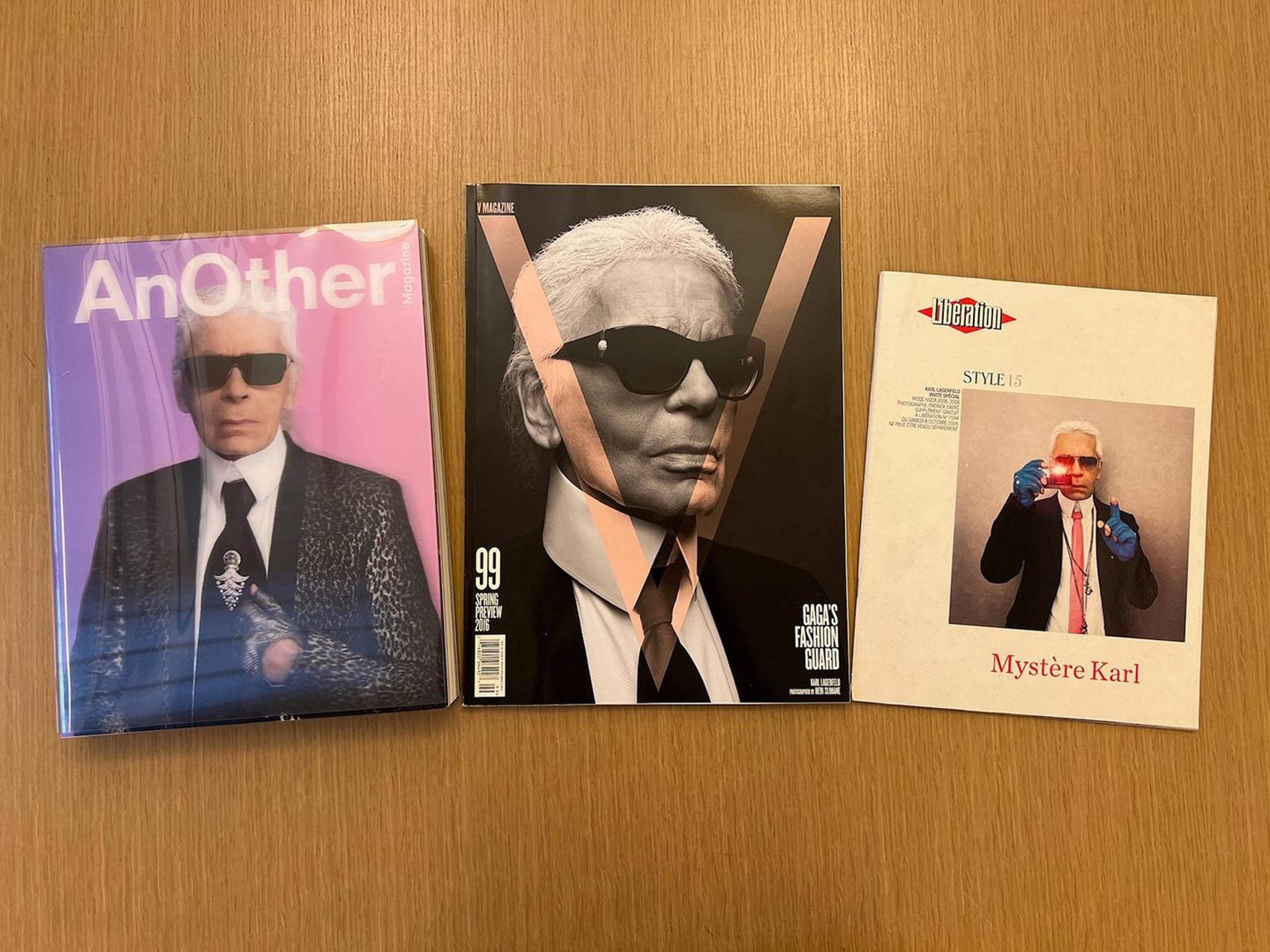
Karl Lagerfeld on the covers of Another, V, and Libération.Style magazines
Some examples of books on Karl Lagerfeld in The Met’s Libraries’ collection
As the departmental librarian in charge of The Costume Institute Library, my primary responsibility is supporting museum staff for exhibition research. Museum-wide, each curatorial department has a dedicated library collection or study center, and their holdings can also be requested and viewed in our main research center, Thomas J. Watson Library.
Lagerfeld was a fashion visionary best known for his work with Chanel for nearly 40 years, but he also worked with Balmain, Patou, Fendi, Chloé, and his eponymous label. His career was multidisciplinary, exploring various roles and spaces adjacent to fashion, such as art, architecture, dance, film, illustration, interior design, photography, and more. The range of library materials we have in our holdings are as diverse as Lagerfeld’s body of work and interests. He particularly loved collecting books and said, “Buying books is a real disease for me, but I don’t want to be cured.” He owned over 300,000 titles in his personal library collection and extended his interests in the printed matter by starting his own bookshop and publishing company. The Costume Institute Library was fortunate to acquire some items from Lagerfeld's personal library collection, which included fashion sketches he collected and saved of his own work, magazines he used for inspiration, as well as an extraordinary collection of nearly two hundred French fashion plates from publications such as L’Art et la Mode, La Toilette de Paris and others dating from the 1860s–1910s. What sets these apart are the handwritten sketches and notes by the designer himself. These annotations illuminate Lagerfeld’s creative process, revealing some of the historical reference points for his designs. This set of fashion plates is also entirely digitized.
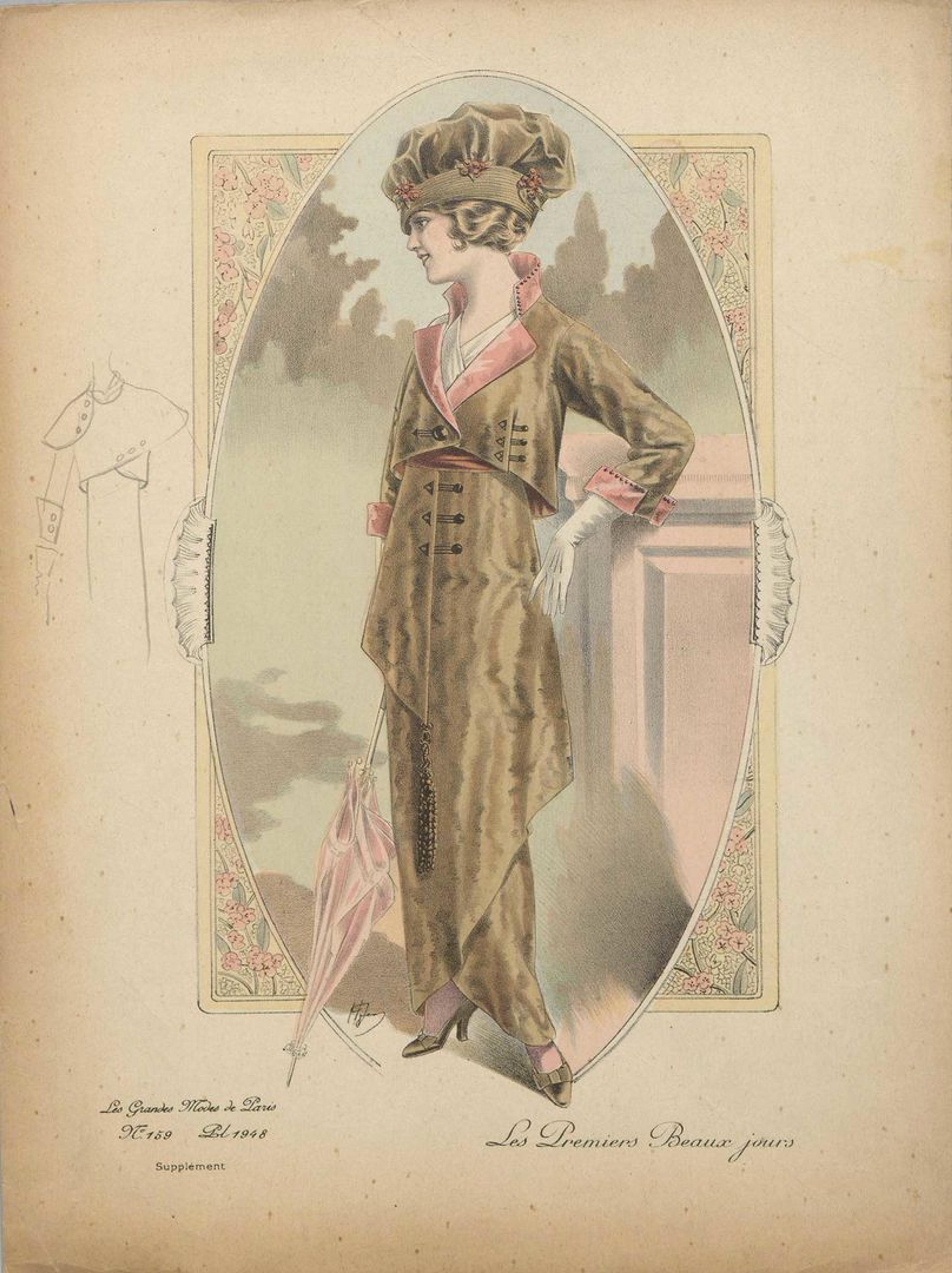
Fashion Plates with Sketches by Karl Lagerfeld, Paris 1860s–1910s; this collection is digitized.
The Museum Libraries’ fashion-specific e-Resources are rich with materials documenting Lagerfeld’s work and career. Research staff extensively review periodical databases for editorials, interviews, and related content in ProQuest’s magazine and trade newspaper holdings such as Vogue (American, Italian), Harper’s Bazaar (American and UK), and Women’s Wear Daily. Another go-to resource is Bloomsbury Fashion Central, a centralized platform to search across all Bloomsbury fashion resources to which the library subscribes and researchers have free access onsite. These include Berg Fashion Library, Fashion Photography Archive, and Fashion Video Archive. A quick keyword search revealed over 6,000 images, nearly 100 runway videos, and 160 articles on Lagerfeld.
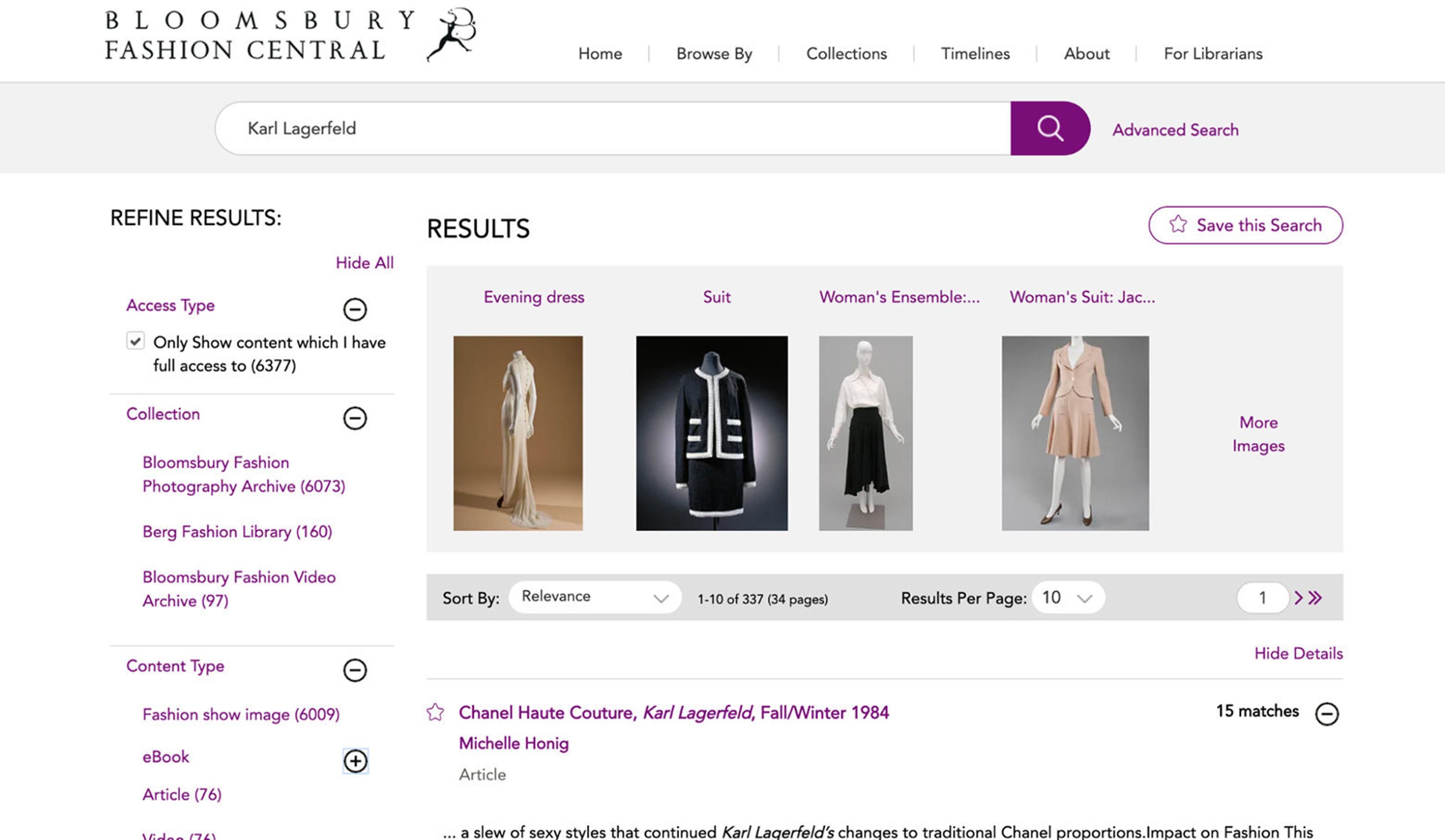
Screenshot of Bloomsbury Fashion Central database search results for “Karl Lagerfeld”
Our designer and subject file collections are another highly consulted resource for both well-known designers/design houses and obscure, defunct brands. The folder contents of these miscellaneous files include tear sheets, press announcements, newspaper clippings, invitations, and other related ephemera. To see all the files in The Costume Institute Library, search Watsonline by call number for “Costume File - People.” A keyword search, “Lagerfeld and costume file,” indicates we have twenty-four folders on the designer. The example in the photo below is the 1988 folder, which contains many ad campaign tear sheets of his own label featuring Pat Cleveland and Veronica Webb.
Lagerfeld was a true culture vulture who equally embraced the high and low. In 2004, he was the first significant couture designer to collaborate with H&M, a mass-market fast fashion brand. At the time, such a notion was unfathomable. This particular capsule collection's success truly changed the fashion retail landscape. It sparked a series of partnerships with high-end fashion designers to create affordable fashions for a broader, more mainstream audience.
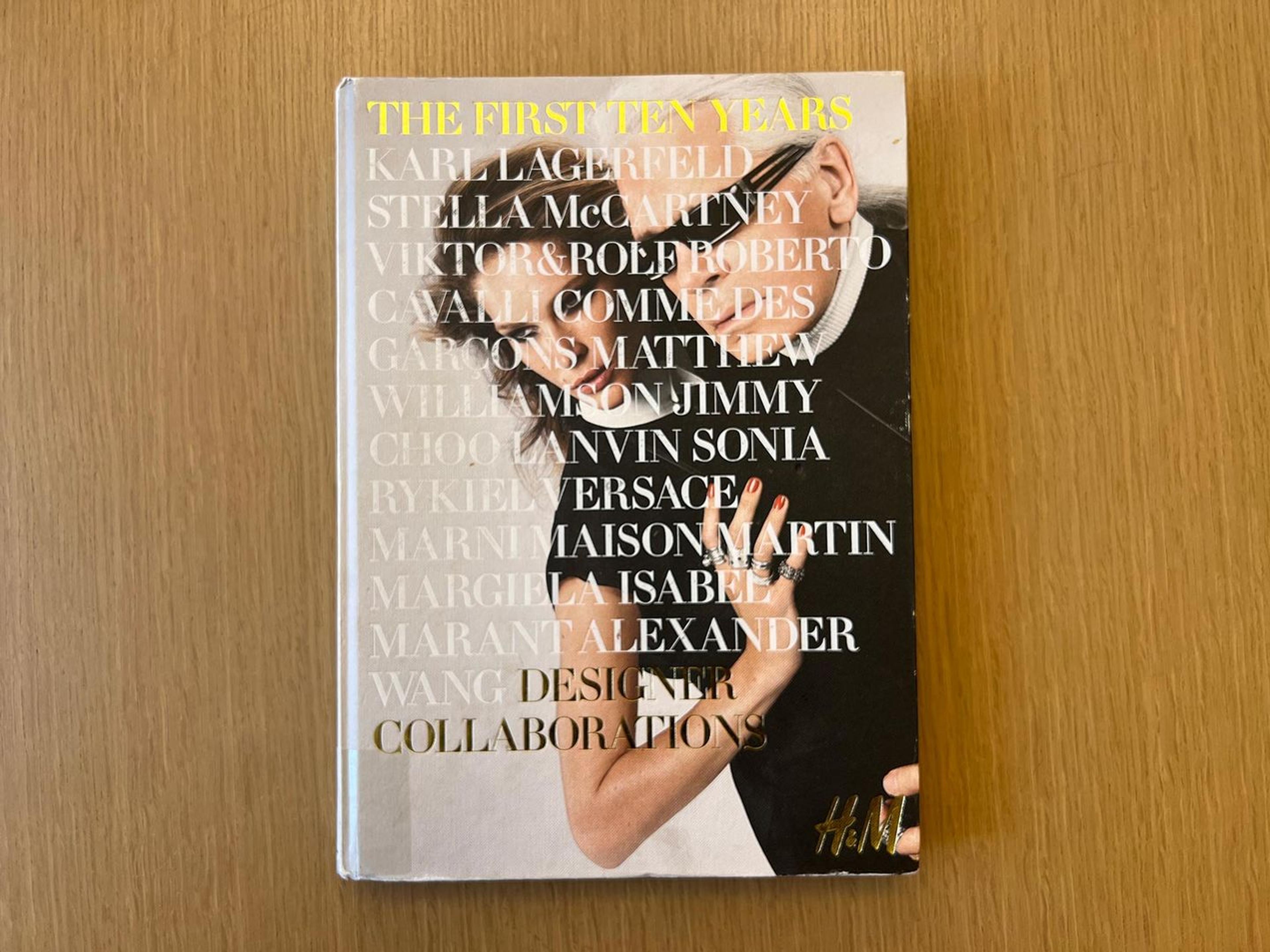
Baatz, Kristin, and Madelaine Levy, eds. The First Ten Years: Karl Lagerfeld, Stella McCartney, Viktor & Rolf, Roberto Cavalli, Comme Des Garçons, Matthew Williamson, Jimmy Choo, Lanvin, Sonia Rykiel, Versace, Marni, Maison Martin Margiela, Isabel Marant, Alexender Wang, Designer Collaborations. (Stockholm: H&M, 2014)
Lagerfeld was famously obsessed with his cat, Choupette, and even published two books honoring his great feline love. At this year’s Met Gala, celebrities paid homage to Choupette on the red carpet, such as musicians Doja Cat, Lil NasX, and actor Jared Leto. In September 2014, Choupette was a special guest editor for The Karl Daily, a tongue-in-cheek advertising publication designed to look like a newspaper. Again, Lagerfeld loved printed matter in all forms, and this broadsheet was a creative way to publicize Lagerfeld’s brand and products, as well as an outlet to share his satirical look at the fashion industry and give his fans a personal insight into the world of Karl. Inside this special newspaper were ads for all of Lagerfeld’s product lines, a street-style photos section called “The Karl Kids,” a comic strip, fictional dating personal ads, faux celebrity gossip, horoscopes, and personal profiles on the designer and his muses. The Karl Daily was distributed in seven European cities.
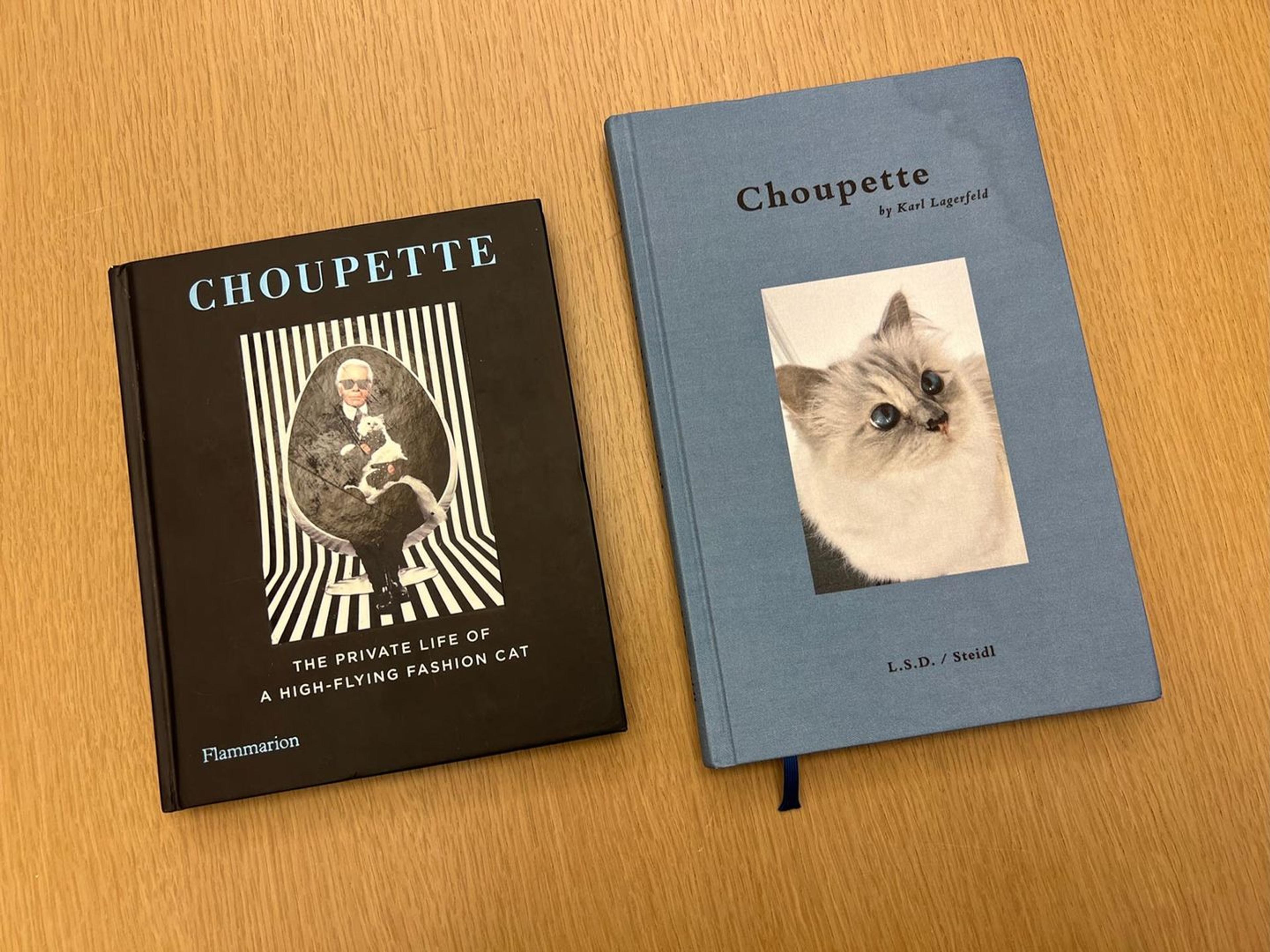
Left, Mauries, Patrick, and Jean-Christophe Napias. Choupette. The Private Life of a High-Flying FashionCat (Flammarion, 2014); Right, Lagerfeld, Karl. Choupette by Karl Lagerfeld (Göttingen: Steidl, 2019)
Where’s Karl?: A Fashion Forward Parody is an homage to the designer and a fashion version of the popular children’s Where’s Waldo? character search books. Fun fact: our former Costume Institute curatorial intern Ajiri Aki authored this book. One of the scenes in the book is a Met Gala event featuring many Costume Institute staff, including yours truly, wearing a black dress and carrying a pile of library books over to Lagerfeld and Choupette’s table!
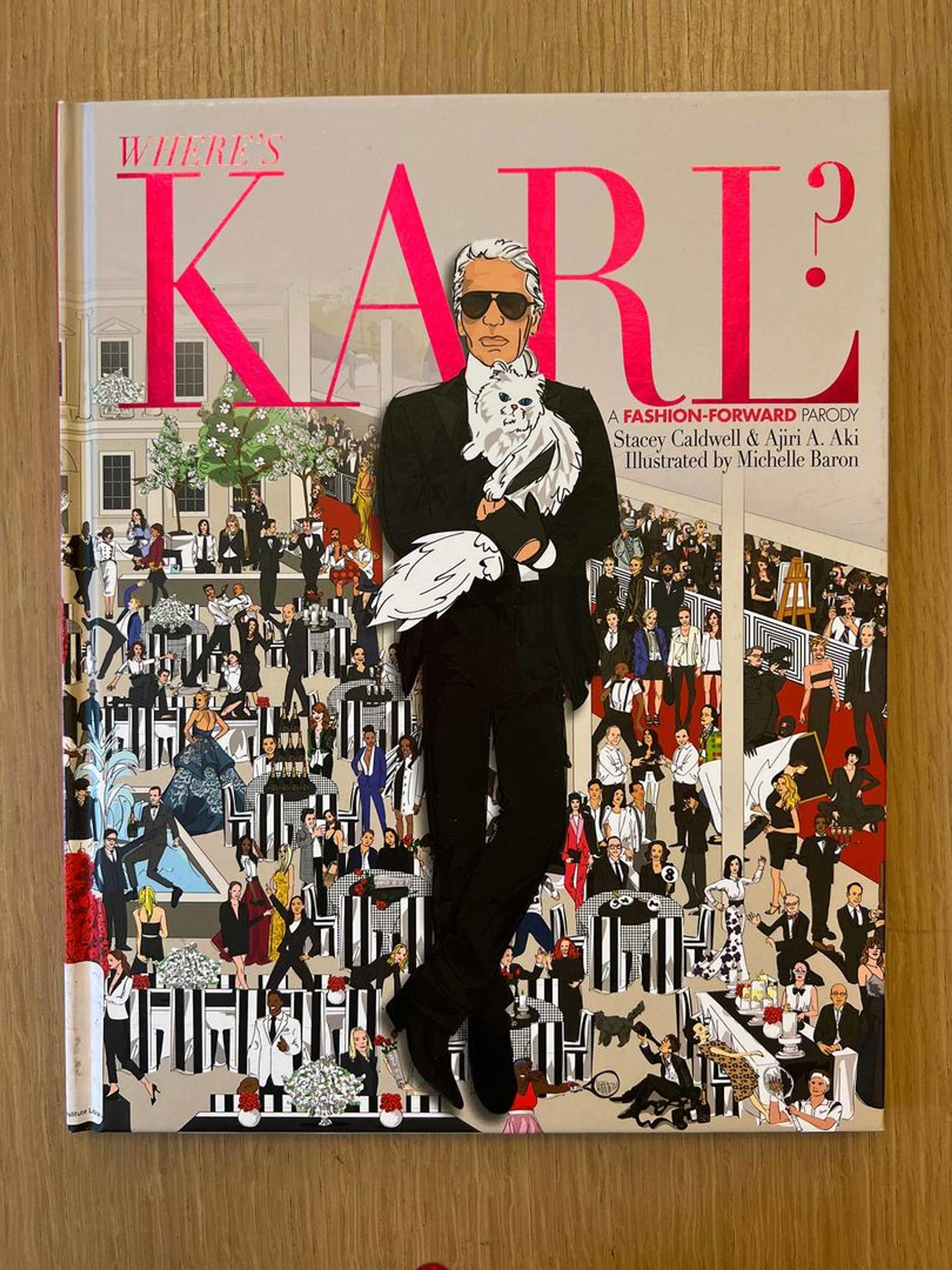
Caldwell, Stacey, and Ajiri A Aki. Where’s Karl?: A Fashion-Forward Parody (New York: Potter Style, 2015)
Lagerfeld was a regular contributor to the New York City-based specialty publication Visionaire. This unconventional fashion magazine playfully blurs the line between a periodical and an artist book. Since the early nineties, each issue of Visionaire has had a different theme and cast of collaborators and is produced in various formats. A popular object for our library show-and-tell presentations is Visionaire Number 44, entitled Toys, a box of five Kidrobot branded toys designed by five fashion designers complete with doll accessories including a point-and-shoot camera, a flower, martini glass, and a 90’s style cell phone. The doll was made in Lagerfeld’s likeness: his signature uniform of sunglasses with a black jacket, white shirt, skinny pants, and even the white hair pulled back in a low ponytail.
Karl Lagerfeld doll from Visioniare Number 44
Another collaboration was with fellow German publisher and printer Gerald Steidl, Fendi by Karl Lagerfeld (published in 2015).They created a mixed media book object documenting five decades of the designer’s work as the artistic director of the luxury Roman fashion house since 1965. Five volumes are encased in a wooden box that is reminiscent of the box of oil pastels that would have been found on Lagerfeld’s studio desk. Included are 137 sketches, his Fendi logo designs, interviews with the designer entitled “50 Questions / 50 Answers,” a conversation with fashion journalist and filmmaker Loic Prigent, a poster, a USB stick containing eight short fashion films, and a linen bag. All of these are carefully housed in a custom-made archival box created by our Book Conservation colleagues.

Lagerfeld, Karl. Fendi by Karl Lagerfeld (Göttingen: Gerhard Steidl, 2015)
Fashion shows are usually documented in video format, and sometimes printed matter is made to commemorate that particular collection (e.g., lookbooks). Lagerfeld created spectacular and memorable runway presentations. Chanel Shopping Center memorialized Lagerfeld’s "Chanel Autumn-Winter 2014-2015 Prêt-à-Porter" collection in a playful book disguised as a mail-order catalog. The catwalk for this show was a faux supermarket venue setting at the Grand Palais in Paris. Every grocery store product was playfully re-imagined by Lagerfeld with Chanel-themed twists, such as Coco Flakes & Coco Rico cereal, Eau de Chanel No. O bottled water, and La Madeleine de Chanel tin of cookies. The supermarket theme crossed over into the fashion designs for this collection, especially the accessories: pad-locked shaped jewelry, chain-covered shopping baskets, vacuum-sealed purses, quilted totes, and even grocery roller bags.
From the Chanel YouTube chanel
Photography was another great passion of Lagerfeld. He photographed many of the lookbooks for his collections and was also commissioned by other fashion magazines, such as Harper’s Bazaar and Numéro. A focused search on Lagerfeld in our lookbook collection reveals over 300+ lookbooks from all his associated brands. During the pandemic, we initiated a project enhancing the library records for our lookbooks by adding an itemized inventory in the contents section that may also include the names of photographers, noteworthy models, hair and make-up artists, and other creatives. With this added information, I discovered that Lagerfeld photographed for a brand outside his own:Hugo Boss’s Spring-Summer 1998 “Baldessarini” collection lookbook.
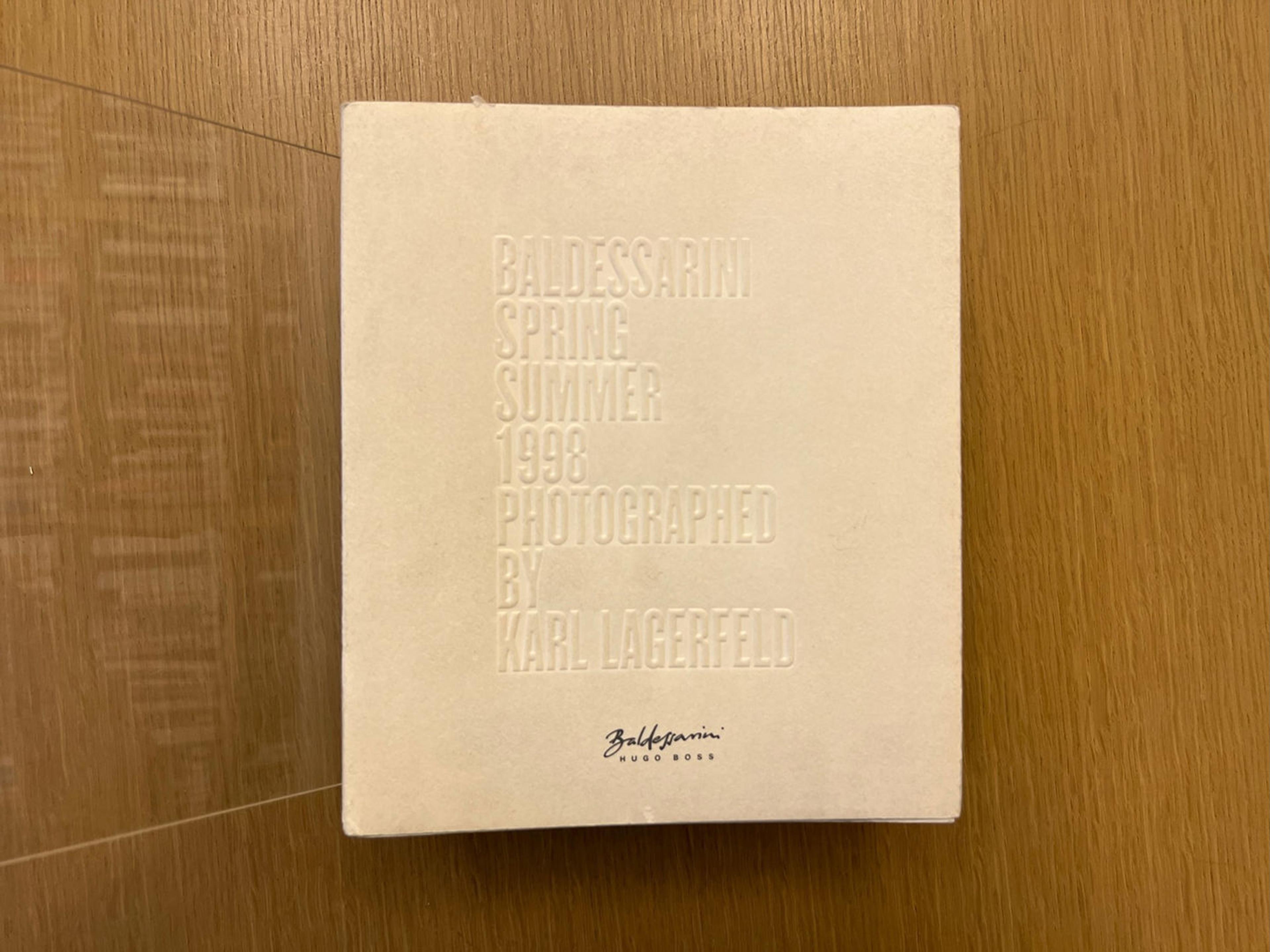
Hugo Boss “Baldessarini” Spring-Summer 1988 collection lookbook photographed by Karl Lagerfeld
The Little Black Jacket: Chanel’s Classic Revisited is an exhibition catalog of a show that started in Tokyo and traveled worldwide to multiple cities. All personalities photographed by Lagerfeld for this series wore a Chanel tweed jacket redesigned by him and styled by Carine Roitfeld in a way that embodies the subject's character. The muses he photographed ranged from actors, artists, directors, models, musicians, writers, as well as close friends. This photographic series was essentially a creative marketing platform that showed how timeless and modern that classic Chanel jacket truly is, an ingenious way to advertise this garment’s versatility and adaptability across different ages and genders.
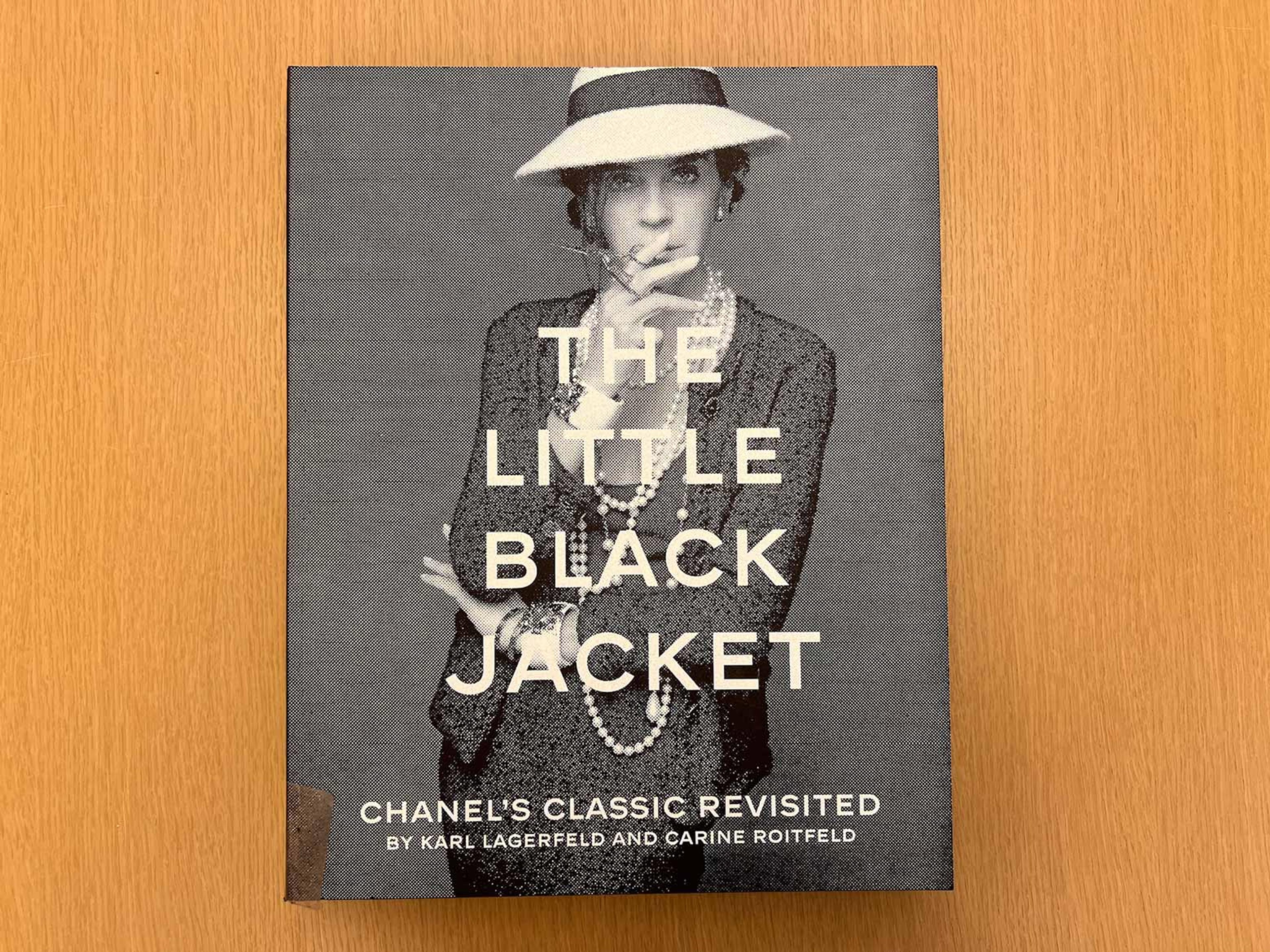
Lagerfeld, Karl, and Carine Roitfeld. The Little Black Jacket: Chanel's Classic Revisited (Göttingen: Steidl, 2012)
As suggested by the title of our exhibition, Lagerfeld was an incredible fashion illustrator. Most of the over 200 garments on display are accompanied by his sketches as part of his creative design process. Lagerfeld was commissioned to illustrate Hans Christian Andersen’s The Emperor’s New Clothes, a classic fairy tale. He also contributed a series of watercolor and pencil-and-ink drawings for a book about Anna Piaggi, an Italian fashion editor known for her striking style of mixing vintage and contemporary fashion. Lagerfeld sketched Piaggi’s ensembles over thirteen years and lovingly said of his friend and muse that “in three strokes, thanks to her, I have been able to preserve things which I could have described in three pages.” Lagerfeld was also a monthly contributor as a caricaturist for the Frankfurter Allgemeine Zeitung Magazine, compiled in Karl Lagerfeld Karlikaturen, which explored his interests in world affairs and political satire.
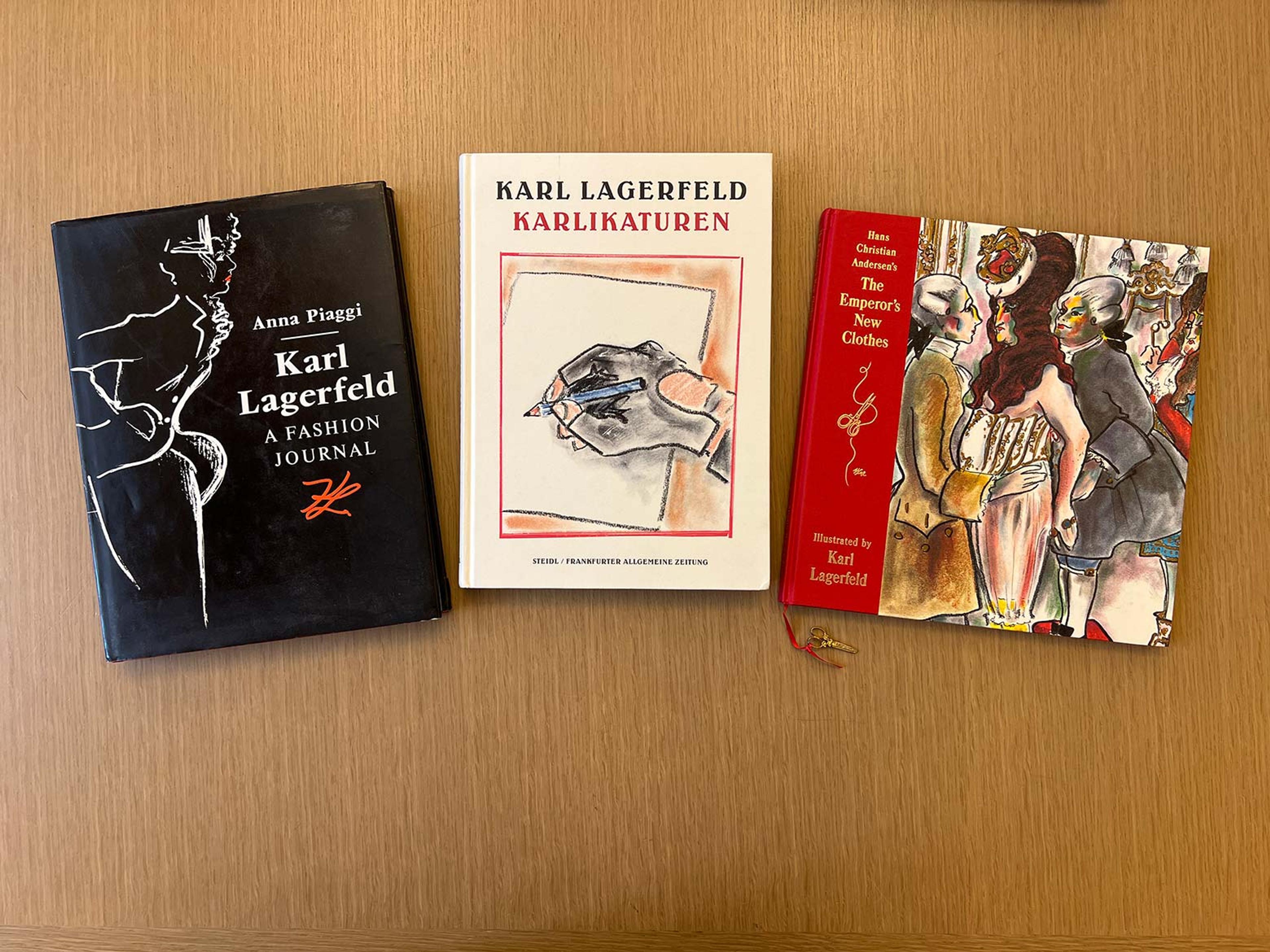
Left, Lagerfeld, Karl, and Anna Piaggi, Karl Lagerfeld: A Fashion Journal: A Visual Record of Anna Piaggi’s Creative Dressing and Self-editing (London: Thames & Hudson, 1986).; Middle, Lagerfeld, Karl, Karl Lagerfeld Karlikaturen (Göttingen: Steidl, 2019) ; Right, Andersen, H C, Karl Lagerfeld, and Edgar Lucas, The Emperor’s New Clothes: The Classic Fairy Tale (New York: Atlantic Monthly Press, 1992)
All these examples provide a glimpse of how to approach fashion research on any designer/brand, but also the joy of deep diving into the life of Lagerfeld or any designer via our library collections. Additional information about The Irene Lewisohn Costume Reference Library, archives, and special collections can be found here on our website. Materials from our fashion library collection can be requested and viewed in Thomas J. Watson Library. For more updates on new acquisitions and more examples of what is inside our fashion library and department, please follow us on Instagram @costumeinsititutelibrary and @metcostumeinstitute.
